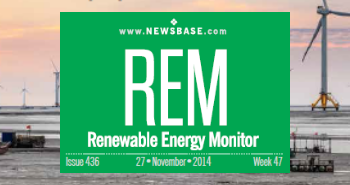US solar panel manufacturing capacity grows nearly four times with federal incentives

A new report reveals that US solar manufacturing capacity has surged to over 31 GW, a nearly fourfold increase since the Inflation Reduction Act (IRA) was signed into law in 2022. This legislation provides tax incentives for the production of domestic clean energy components, such as solar panels, as well as for solar installations.
According to the US Solar Market Insight Q3 2024 report from the trade group Solar Energy Industries Association (SEIA) and analysts at Wood Mackenzie, federal policies are fuelling significant growth in both production and deployment. The industry installed 9.4 GW of new capacity in the second quarter of 2024 alone.
Since the IRA's signing on August 16, 2022, the solar sector has added 75 GW, which makes up over 36% of all US solar capacity in history. In that period, nearly 1.5 million American homes adopted solar.
The US is the second-largest market globally in terms of cumulative and annual installations, after China.
"The solar and storage industry is putting federal clean energy policies into action, spurring job creation and economic expansion across the country, particularly in key states like Arizona, Nevada and Georgia," said SEIA president and CEO Abigail Ross Hopper. "We are now producing record levels of solar power domestically and will soon be able to meet nearly all US demand with homegrown modules."
Concerns remain about China's dominance in the global solar supply chain. A 2022 report from the International Energy Agency (IEA) emphasised the need for more diversified supply chains to ensure a secure transition to net-zero emissions.
Texas continues to dominate the US solar market, with 5.5 GW of capacity installed in the first half of 2024, leading the nation. States like Florida, Nevada, Ohio and Arizona, swing states in the presidential and congressional elections this November, are also top solar performers.
Michelle Davis, Wood Mackenzie’s head of global solar and the report's lead author, said the industry had a strong second quarter, especially in utility-scale projects.
However, challenges such as interconnection delays, equipment shortages and labour constraints are hindering future growth. Additionally, uncertainty around proposed tariffs and the upcoming presidential election could have an impact on the sector, she said.
Republican candidate Donald Trump has said he will repeal the clean-energy tax credits in IRA on “day one”, although it is not within a president’s power to do that, though he could likely slow down authorisations. Congress is the lawmaking body in the federal government. Most members of Congress are up for re-election on November 5.
The residential solar market saw a contraction in Q2 2024, largely due to policy changes in California and rising interest rates. The market added 1.1 GW, its lowest in nearly three years, but is expected to rebound in 2025 and break annual records from 2026 to 2029.
Solar installations are projected to grow at an average rate of 4% over the next few years, with total US solar capacity set to double to 440 GW by 2029, according to the report.


Follow us online